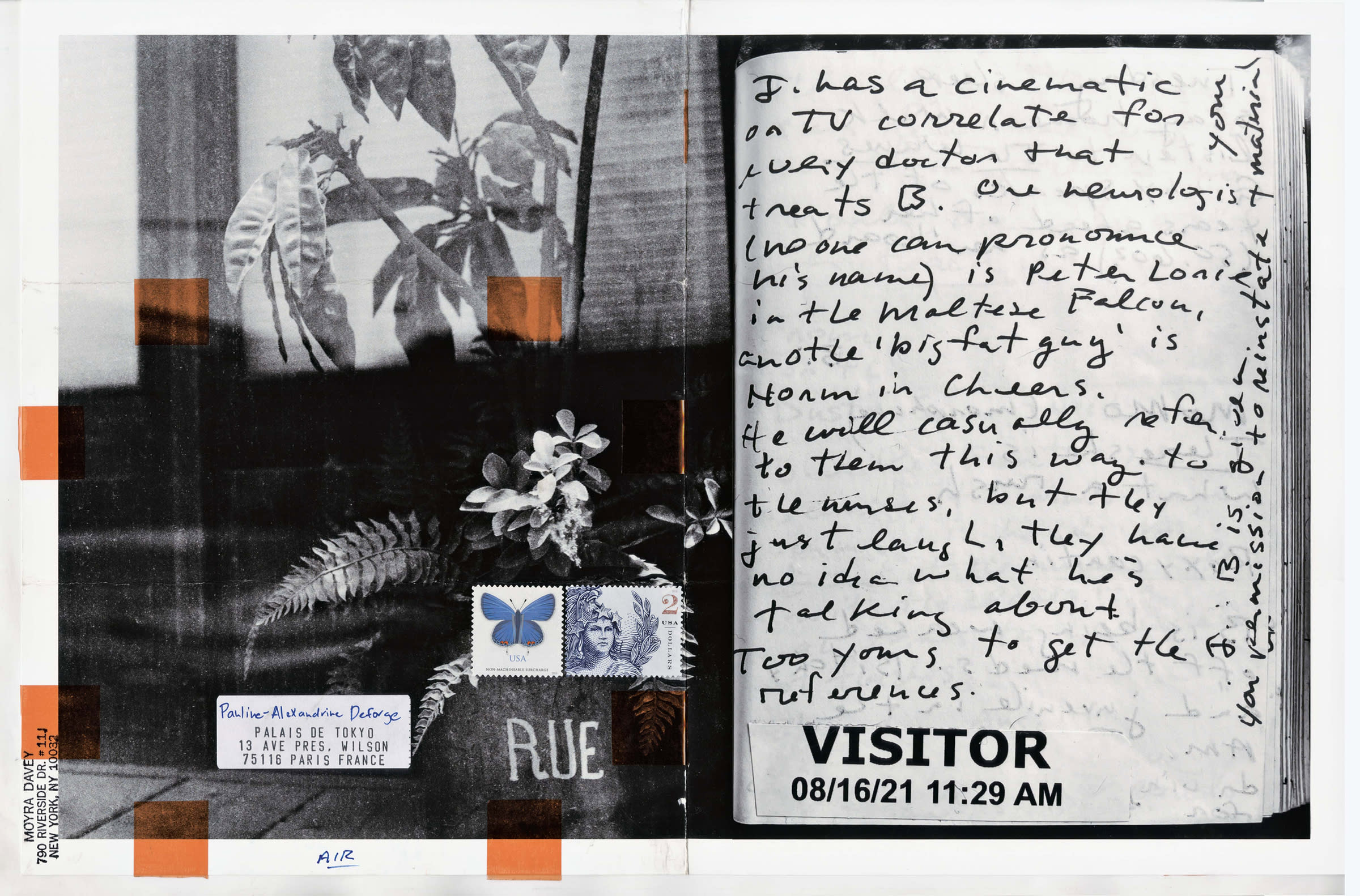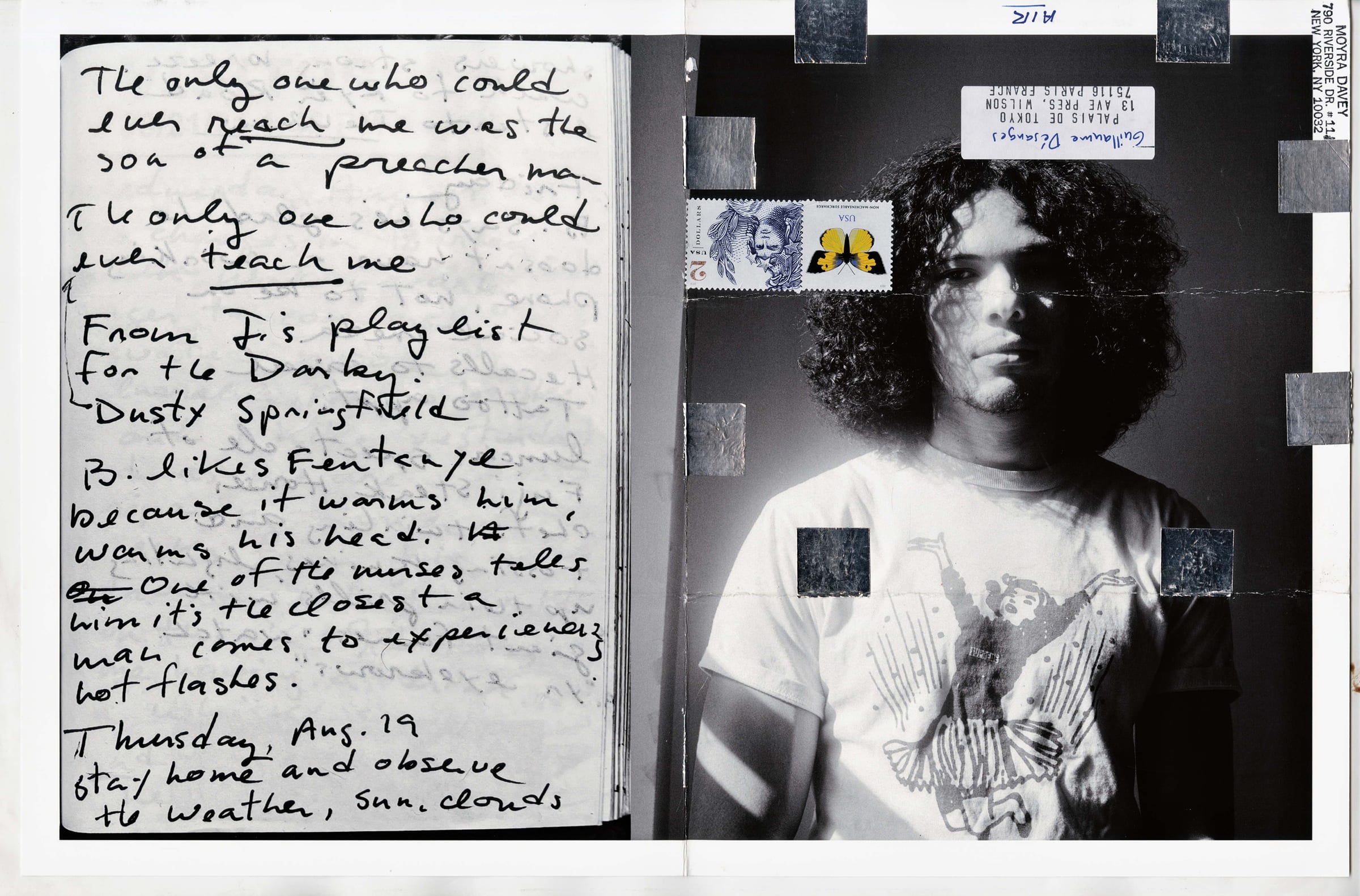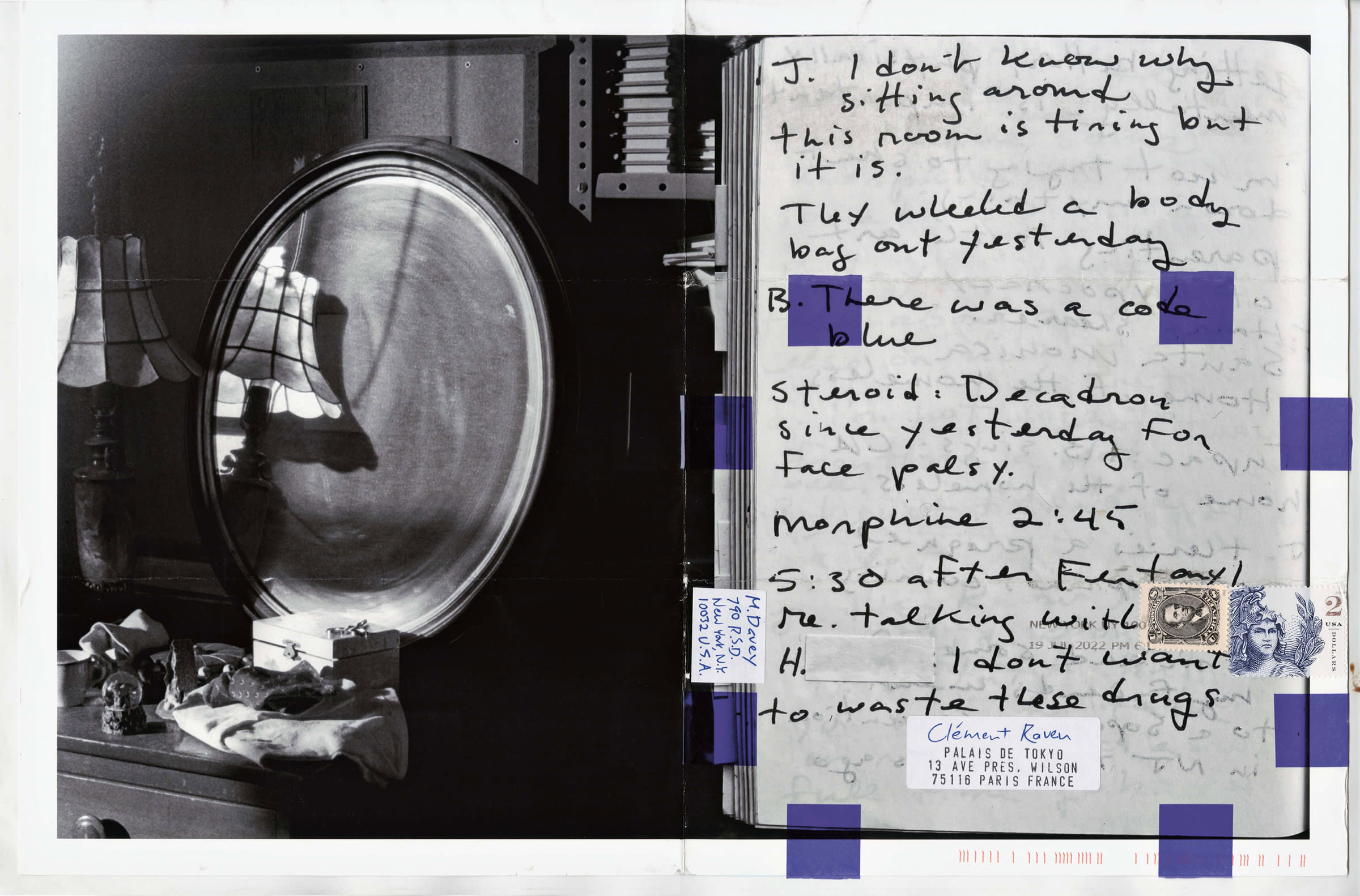I’ve long admired photographers/artists, such as Francesca Woodman and Mark Morrisroe, who’d write directly on their prints. Woodman would scratch words in pen and ink below her images, and Morrisroe, seemingly bored with touching up color prints, would allow his brush to stray into the margins [of his photographs], laying down dashes of color and words. David Wojnarowicz embedded diary fragments into many of his photographic works, notably in the montaged ‘Sex Series (for Marion Scemama)’. Hervé Guibert, a writer and a photographer, joined written comments to many of his photographs as well, and produced the book Susanne et Louise – about his aunts – accompanied by a long text in his own handwriting.

I’ve treated my prints in unconventional ways, but the gesture of writing on the photograph has always eluded me, and Visitor (2022) is the first time I’ve found a way to couple language and image. It began with a spontaneous transcription of a verbatim conversation between a father and son in an ICU unit, the day after a bad car accident. The son, B., had been seriously injured – he had broken vertebrae in his neck and a head wound, he was being given strong opioids – nonetheless, he was very lucid and wanted to talk, and there are things he wanted to get off his chest. Much of the exchange was about the drugs he was being given – morphine and Fentanyl – and other drugs, party drugs. He wanted to flush out what he perceived as a kind of hypocrisy or double standard around substances that existed within the family dynamic.


The transcription is in my hand. When the conversation began, I grabbed a small notebook and quickly wrote down what I was hearing, so there are mistakes, dropped letters and words. I interjected a few observations, but mostly it was a text being delivered to me, not within my control, which is something I value, this kind of ready-made nature of the text.
When my son was in his last year of high school, he took a class in black & white photography, and for one of his assignments, he recreated Hervé Guibert’s Sienne (1979) – the photograph of a young man lying face down at a table, his back bathed in sunlight, the space above him shrouded in smoke. B. used his friend, Eric, as a model – the same Eric who appears in my own photographs five or six years later with his hair grown out, wearing a Supreme t-shirt.

I was thinking a lot about Hervé Guibert as I made Visitor. The Downer’s Pharmacy storefront [in New York City], from another era, reminded me of his many photographs of vitrines in natural history museums; and when I make portraits of young men in natural light, I am always thinking of my antecedents in this genre – Peter Hujar and Hervé Guibert high on the list.
Part of the installation in ‘Exposé∙es’ at the Palais de Tokyo involved selecting prints from Guibert’s archive, ten of which hang on a wall opposite Visitor. The instruments of Guibert’s trade figure prominently in two of the images: his negatives and contact sheets in one, and a tape recorder, typewriter, and fountain pen in another. From these depicted tools and materials, optical and graphic, Hervé Guibert created the image-text pairings that have long held sway over my photographic imaginary.

Moyra Davey is a Canadian artist and writer based in New York. She is represented by Galerie Buchholz (Berlin, Cologne, and New York) and greengrassi (London).
‘Exposé∙es’
Palais de Tokyo, Paris
From February 17 to May 14, 2023
Published on April 3, 2023.